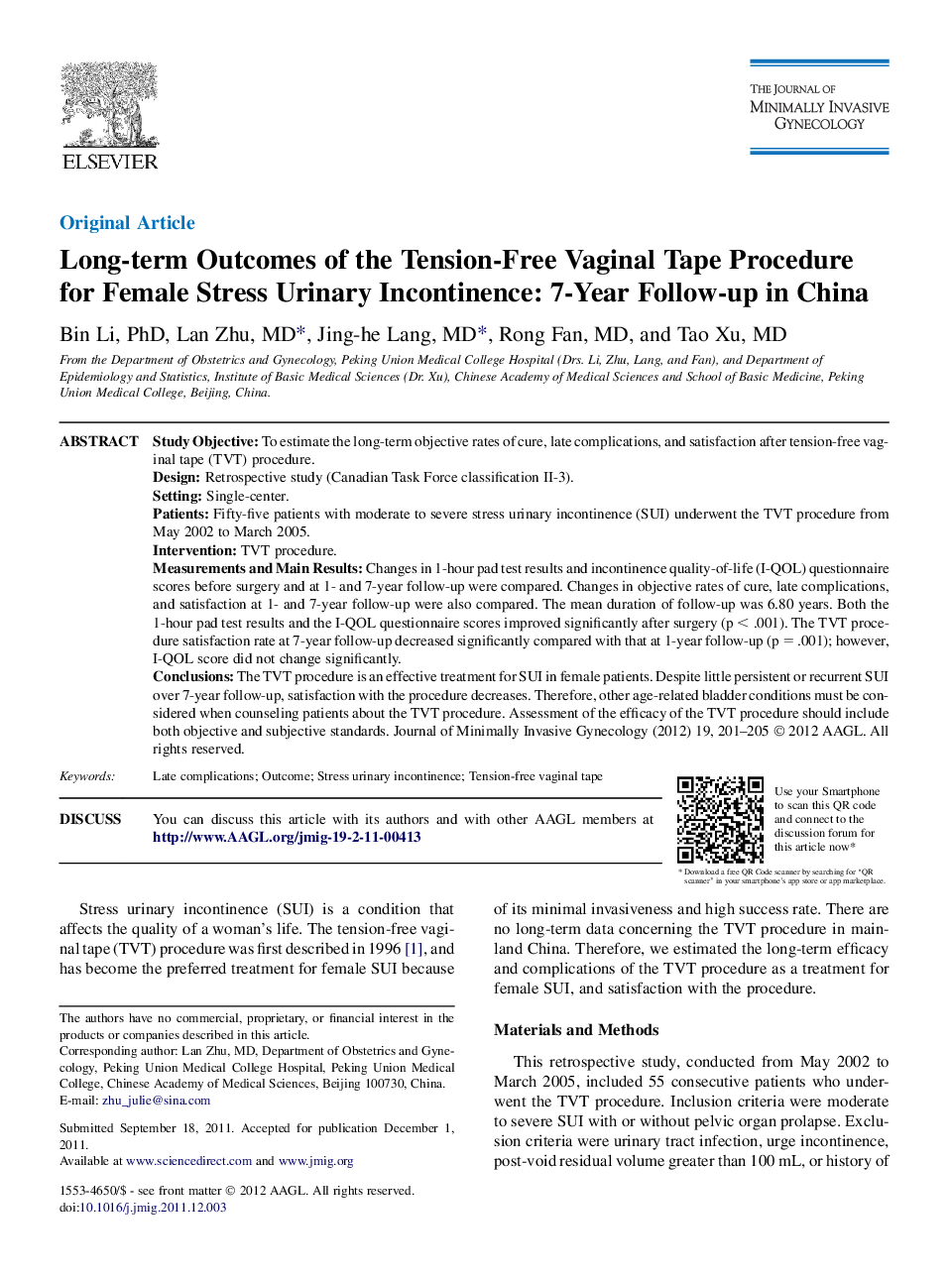| Article ID | Journal | Published Year | Pages | File Type |
|---|---|---|---|---|
| 3958851 | Journal of Minimally Invasive Gynecology | 2012 | 5 Pages |
Study ObjectiveTo estimate the long-term objective rates of cure, late complications, and satisfaction after tension-free vaginal tape (TVT) procedure.DesignRetrospective study (Canadian Task Force classification II-3).SettingSingle-center.PatientsFifty-five patients with moderate to severe stress urinary incontinence (SUI) underwent the TVT procedure from May 2002 to March 2005.InterventionTVT procedure.Measurements and Main ResultsChanges in 1-hour pad test results and incontinence quality-of-life (I-QOL) questionnaire scores before surgery and at 1- and 7-year follow-up were compared. Changes in objective rates of cure, late complications, and satisfaction at 1- and 7-year follow-up were also compared. The mean duration of follow-up was 6.80 years. Both the 1-hour pad test results and the I-QOL questionnaire scores improved significantly after surgery (p < .001). The TVT procedure satisfaction rate at 7-year follow-up decreased significantly compared with that at 1-year follow-up (p = .001); however, I-QOL score did not change significantly.ConclusionsThe TVT procedure is an effective treatment for SUI in female patients. Despite little persistent or recurrent SUI over 7-year follow-up, satisfaction with the procedure decreases. Therefore, other age-related bladder conditions must be considered when counseling patients about the TVT procedure. Assessment of the efficacy of the TVT procedure should include both objective and subjective standards.
